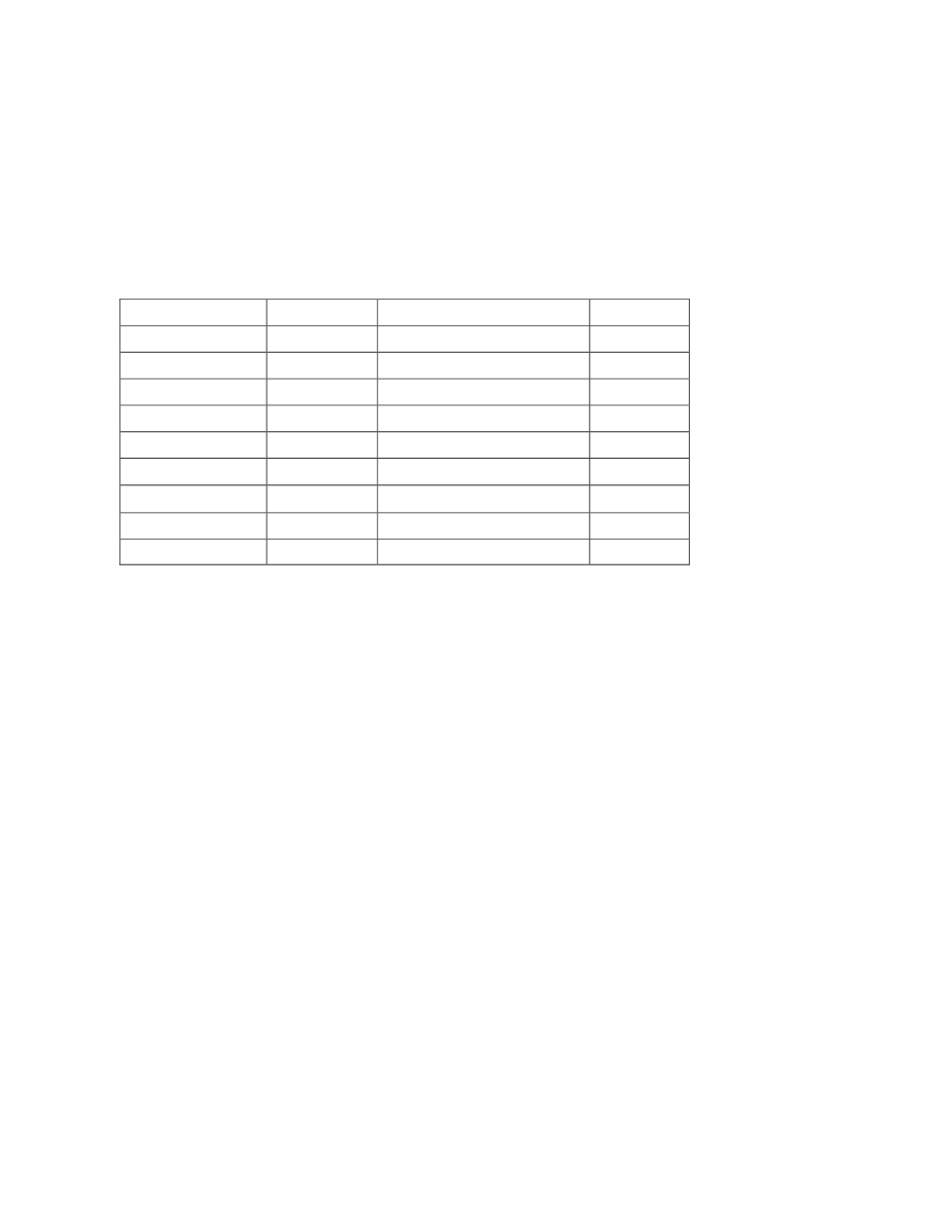

Ref. No. [UMCES] CBL 2016-013
ACT VS16-04
25
Individual response slopes and intercepts of instrument measurement versus reference DO
for each of the laboratory trials at a fixed temperature and salinity level are summarized in Table 4.
The response curves of the HOBO U26 exhibited no consistent trends in the response slopes across
the temperature and salinity levels.
Table 4.
Summary of regression statistics for the HOBO U26 versus reference sample response curves for
each of the nine laboratory trials.
Test ID
R2
y Intercept
Slope
LT15S00
1.000
-0.074
1.041
LT15S10
1.000
-0.083
1.028
LT15S35
1.000
-0.071
1.023
LT04S00
1.000
-0.115
1.049
LT04S10
1.000
-0.061
1.032
LT04S35
1.000
-0.076
1.026
LT30S00
1.000
-0.108
1.044
LT30S10
1.000
-0.075
1.039
LT30S35
1.000
-0.060
1.039
Results of the 56 day long-term stability and thermal stress challenge for the HOBO U26
RDO are shown in figure K. The instrument was maintained in a well circulated tank and oxygen
content manipulated by alternately varying water temperature set point between 15 and 25
o
C
several times per week of deployment. The time series of instrument readings at 15min intervals is
plotted against discrete values for Winkler reference samples (
top panel
) along with the time series
of the difference between instrument and reference measurements (
bottom panel
).
The overall
mean of differences between measurements was 0.041 (s.d. = 0.339) mg/L for 154 comparisons
(out of a potential total of 156). If the outliers near the end of the test are omitted there was no
significant change in accuracy over time (slope = -0.002 mg/L/d; r
2
= 0.011; p=0.206). For all
data, the slope increased to -0.004 mg/L/d (r
2
= 0.049; p=0.006) reflecting the influence of the two
large negative responses near the end of the test.
Results for a functional sensor response time assessment of the HOBO U26 are shown in
figure L. The top panel depicts the time series of 60s instrument reads during transfers between
adjacent high (9.6 mg/L) and low (2.0 mg/L) DO water baths, maintained commonly at 15
o
C. The
bottom panel (
lower left
) depicts results fit with a 3 parameter exponential decay function: DO
rel
=
DO
relMin
+ a
e
-bt
and indicated τ calculated from fit. Data for low DO to high DO transitions (
lower
right
) were treated similarly but normalized to steady state value in subsequent high DO tank and
subsequently fit with an analogous 3 parameter exponential rise function: DO
rel
= DO
relMin
+ a(1-
e
-
bt
) with indicated τ being directly calculated from fit.
The calculated τ
90
was 27 s during high to
low transitions and 26 s for low to high transitions covering a DO range of approximately 8 mg/L
at a constant 15
o
C.
















